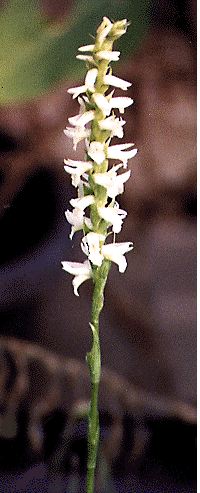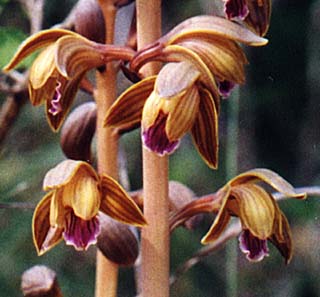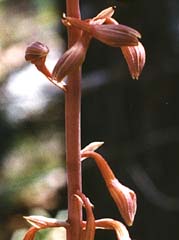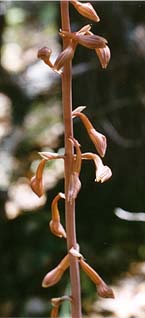Deer love orchids. Without protection I have never seen any survive to produce mature seedpods.
| Great Plains Ladies' Tresses, Spiranthes magnicamporum |
Crested Coralroot Hexalectris spicata |
|---|---|
|
Primarily in seasonal seep areas with northeast exposure, in heavy
caliche, often associated with seep muhly grass, at times in cedar
mulch. With basal leaves in early spring, it is dormant through the summer
until late fall rains bring up leafless flower stalks. Both leaves & flowers are sought by deer. |
Late spring & summer bloomer, rising out of oakleaf & cedar mulch following wet spells. Brownish and almost invisible from a distance, flower stalks from 1 to 2 1/2 feet produce beautiful subtly-colored flowers. |

|

A small stand of Hexalectris.
|
|
Cleistogamous H. spicata var. arizonica
Rises in a well-mulched shady oak grove or in juniper mulch after late summer rains. But most years it has not been found. In 1999, with no rain for 12 weeks since July 21, two stalks appeared after the first of only two well spaced rains and produced fruits, dehiscing in mid November. |
||

|

|

|
Epipactis gigantea appeared along opposite edges of our creek bottom at one point for the first time in the spring of 2002, a year marked by masses of larvae. Upon discovery of this rarity, I immediately surrounded the plants with fencing to prevent the deer from getting to them, but upon producing buds insects devoured all but one bud and much of the vegetation. Maybe next spring will produce a photograph.